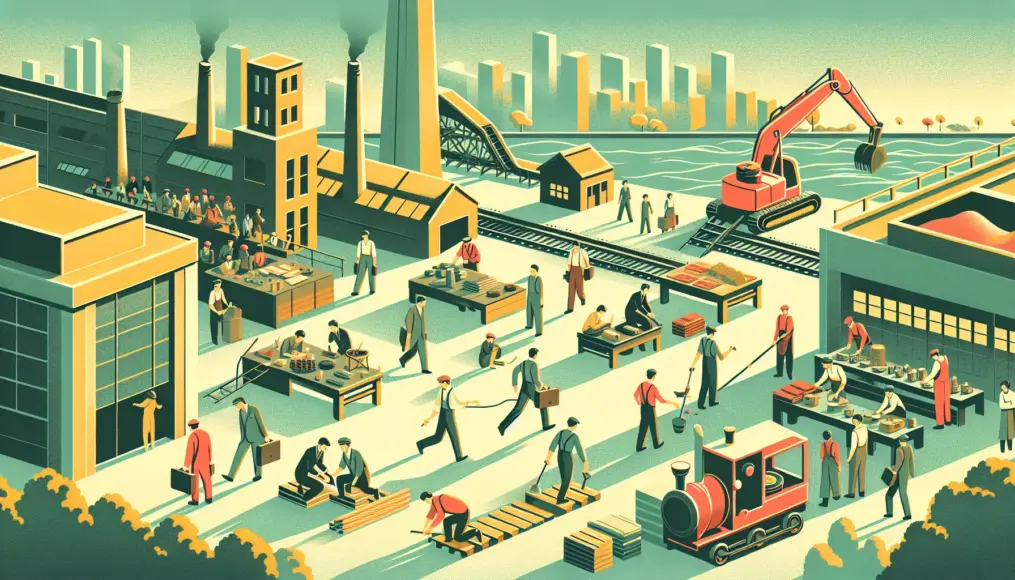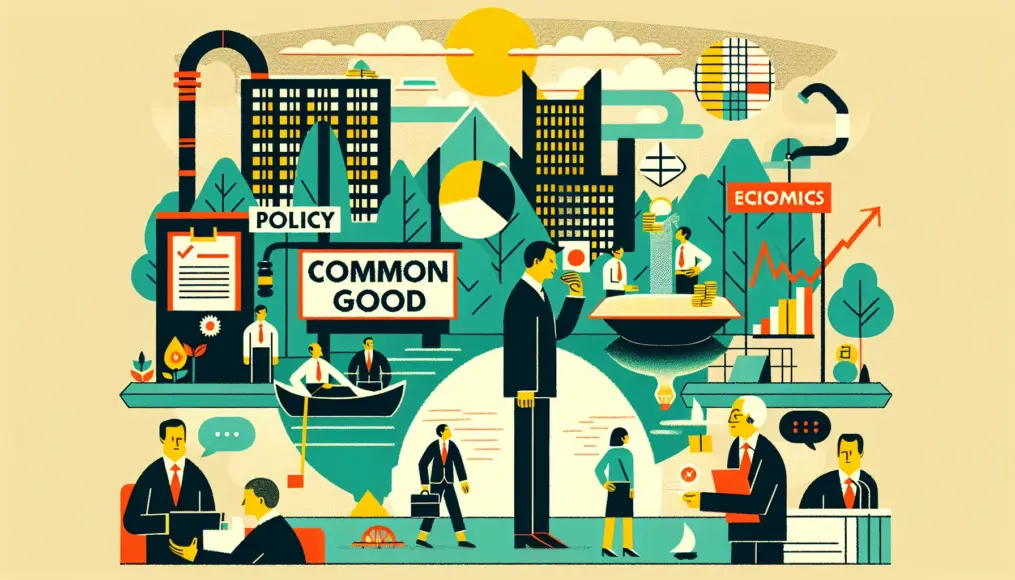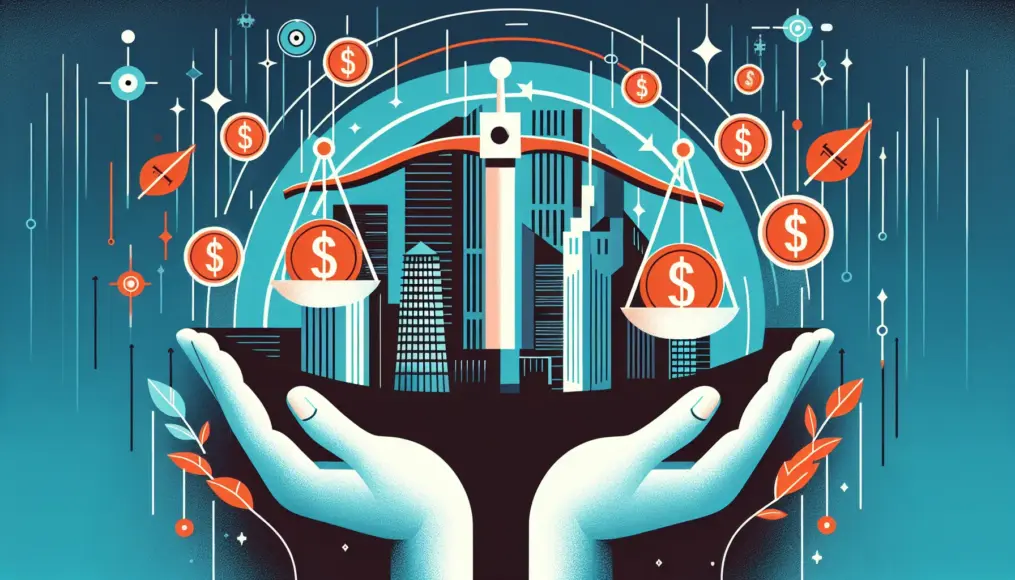Labor issues are a fundamental aspect of our society, evolving through various changes throughout history. Since the Industrial Revolution, the landscape of work has transformed significantly, with an increasing demand for worker rights. Today, these issues continue to be a critical topic of concern, influencing both our economy and culture.
In this article, we will begin by exploring the historical background of labor issues and their evolution over time. We’ll then delve into their impact on contemporary society and examine the relationship between labor and culture. Additionally, we will discuss how we can create a sustainable work environment for the future, addressing the challenges and opportunities that lie ahead. By deepening our understanding of labor issues, we may take a meaningful step toward building a better society.
- Exploring the historical background and evolution of labor issues
- Examining the impact of labor issues on modern society
- Proposing ways to build a sustainable work environment for the future
Historical Background of Labor Issues
Labor issues have always been a significant concern as our society has evolved. The Industrial Revolution, in particular, brought about dramatic changes in working conditions, presenting new challenges for many workers. During this period, the demand for improved workers’ rights and better labor conditions grew louder, laying the groundwork for the labor movement.
In this section, we will delve into the changes in the labor environment brought about by the Industrial Revolution and the beginnings of the labor movement that followed. Understanding the history of labor issues is crucial for contemplating the modern labor landscape.
The Industrial Revolution and Changes in Labor Environment
The Industrial Revolution took place from the late 18th century into the 19th century, marking a shift from an agriculture-based society to an industrial one. This transition led many people to move to urban areas and work in factories. However, factory labor was often characterized by long hours and poor working conditions, putting workers in extremely harsh environments.
As workers’ rights were frequently overlooked, their living conditions deteriorated, leading to heightened social discontent. This backdrop of discontent provided fertile ground for the rise of the labor movement.
- Changes in labor environments were brought about by the Industrial Revolution.
- Workers’ rights were disregarded, and harsh working conditions became a pressing issue.
- Rising social discontent served as a catalyst for the emergence of the labor movement.
The Emergence of the Labor Movement
The labor movement is a collective effort by workers to protect their rights and voice their concerns. Influenced by the Industrial Revolution, workers began to unite in their demands for improved working conditions. What started as small-scale strikes and demonstrations gradually evolved into nationwide movements.
The labor movement fostered worker solidarity and organization, leading to improvements in working conditions and wages. As a result, workers were able to establish their status in society, and awareness of labor issues increased significantly.
If you’re intrigued by this topic, you might also find this article particularly interesting: “Real Stories of Women Facing Work Challenges.” It provides an in-depth look at various aspects of modern labor issues through real-life experiences, focusing specifically on women’s labor challenges and the inequalities they face in the workplace.
- The labor movement is an activity for workers to protect their rights.
- It evolved from small-scale strikes to nationwide movements.
- It promoted worker solidarity, leading to improvements in labor conditions and wages.
Labor Issues in Modern Society
In today’s world, labor issues impact our lives in various ways. Economic fluctuations and technological advancements have brought significant changes to employment patterns and working conditions. As a result, workers are facing new challenges, which in turn ripple through the economy and society as a whole. This chapter delves into the economic implications of modern labor issues and the social challenges they present.
Labor issues extend beyond the realm of individual workers; they can significantly affect businesses and national economies as well. For instance, declining wages and job insecurity can lead to reduced consumer spending and stagnation in economic growth. Understanding these issues and seeking solutions is crucial for building a sustainable society moving forward.
Economic Implications
Labor issues have a wide-ranging impact on the economy. Job instability and declining wages diminish consumers’ purchasing power, which in turn slows down economic growth. Additionally, if workers do not have a secure and supportive work environment, productivity suffers, negatively affecting corporate competitiveness.
Furthermore, as labor issues become more severe, the burden on social security systems increases, impacting national finances. Given the extensive influence labor issues have on the economy, urgent measures are needed.
- Labor issues contribute to slowing economic growth
- Job instability affects consumers’ purchasing power
- Increased pressure on social security systems impacts national finances
Social Challenges
The labor issues we face today also give rise to significant social challenges. For example, the rise of non-regular employment and deteriorating working conditions lower the quality of life for workers and exacerbate social inequality. Additionally, health problems arising from overwork and stress are on the rise, adversely affecting workers’ mental health.
Moreover, the problems faced by workers can extend to families and local communities. Longer working hours can weaken connections with family and community, leading to increased feelings of isolation among individuals. Addressing these social issues requires concerted efforts from both businesses and governments.
For related content, check out this article on Rethinking Employment Issues: Turning Adversity into Opportunity. It offers fresh insights into solutions for labor issues and provides tips for achieving sustainable employment. This resource can help deepen your understanding of the challenges in today’s labor environment.
- The rise of non-regular employment exacerbates social inequality
- Deteriorating working conditions lead to health problems
- Weakened ties to family and community increase feelings of isolation
The Connection Between Culture and Labor Issues
Labor issues are intertwined not only with economic and legal factors but are also deeply rooted in cultural contexts. The evolution of labor culture has been influenced by the values and social structures of different countries and regions, significantly shaping workers’ perceptions and work styles. As globalization accelerates in today’s world, new labor issues emerge from the intersection of diverse cultures. This chapter explores the evolution of labor culture and the impact of globalization.
By understanding the cultural background, we can uncover the fundamental causes of current labor issues. This insight may offer fresh perspectives for improving work environments and achieving sustainable labor societies.
The Evolution of Labor Culture
Labor culture has transformed significantly across different eras and regions. For instance, as societies transitioned from agrarian to industrial, the values associated with work and work styles underwent substantial changes. Factory work emphasized efficiency and productivity, often at the expense of workers’ health and quality of life.
In recent years, the importance of work-life balance and diversity has gained recognition, leading to shifts in labor culture. Particularly among younger generations, there is a growing awareness regarding work styles and workplace environments, with many seeking more flexible working conditions. These changes are creating new possibilities for addressing labor issues.
- Labor culture has evolved over time and varies by region.
- While efficiency and productivity have been prioritized, health and quality of life have sometimes been overlooked.
- Younger generations tend to seek more flexible work arrangements.
The Impact of Globalization
In today’s increasingly globalized world, labor issues are transcending borders. The rise of multinational corporations has led to the blending of different cultures and labor practices, giving rise to new challenges. For instance, wage disparities and differences in working conditions have emerged as international issues, prompting active discussions about workers’ rights.
Moreover, globalization has spurred technological advancements, leading to the rise of new work arrangements like remote work and freelancing. While this has provided workers with a broader array of choices, it has also brought to light concerns regarding unstable employment and deteriorating working conditions.
- Globalization has allowed labor issues to cross national boundaries.
- Multinational corporations contribute to wage disparities and differences in labor conditions.
- The expansion of new work arrangements has also highlighted issues of job instability.
Looking Ahead: Opportunities and Challenges in the Workforce
The landscape of labor issues is evolving, presenting both new opportunities and challenges for the future. With rapid technological advancements reshaping how we work and the types of employment available, workers are increasingly required to acquire new skills and adapt to changing environments. In today’s world, where building a sustainable work environment is crucial, it is imperative for businesses and governments to take measures that protect workers’ rights and well-being. This chapter explores the impact of technological innovation on the future of work and the challenges involved in creating a sustainable labor environment.
Addressing labor issues requires more than just temporary fixes; it calls for a comprehensive approach that looks toward the future. Collaboration among workers, businesses, and society as a whole is essential to pave the way for a sustainable society.
Technological Innovation and the Future of Work
Technological innovation is a major driver of change in the nature and structure of work. Particularly, advancements in AI and robotics are not only creating new job opportunities but also have the potential to automate certain roles, leading to job losses. Consequently, workers must acquire new skills, which underscores the growing importance of education and retraining.
Additionally, the rise of remote work and freelance opportunities has granted workers the flexibility to choose work arrangements that align with their lifestyles. However, these changes can also lead to situations where workers’ rights and protections are insufficient, highlighting the need for vigilance.
- While technological innovation creates new job roles, it may also lead to job losses.
- Workers are increasingly required to learn new skills and pursue retraining.
- The spread of flexible work arrangements has expanded choices for workers, but rights protection remains a challenge.
Building a Sustainable Work Environment
Creating a sustainable work environment is a critical issue in contemporary society. Companies are called upon to prioritize employees’ health and well-being by fostering supportive work conditions. Furthermore, it is vital for workers to understand their rights and advocate for themselves effectively.
Moreover, governments and local communities must establish policies and systems to support workers. This includes measures such as regulating work hours, raising wages, and addressing workers’ mental health concerns. By taking these steps, we can move toward a sustainable work environment and make significant progress in resolving labor issues.
- Building a sustainable work environment is a key challenge in modern times.
- Companies must consider the health and well-being of their employees.
- Policies and systems to support workers are needed from governments and local communities.
Summary
Labor issues are a crucial topic for our society, influenced by historical context, culture, and economic factors. Since the Industrial Revolution, working conditions have undergone significant changes, and even today, new challenges continue to emerge. As technological advancements and globalization progress, workers must acquire new skills, and there is a pressing need to establish sustainable working environments.
To tackle these challenges, collaboration among businesses, governments, and local communities is essential to protect workers’ rights and welfare. Looking ahead to the future of the labor market, concrete actions are required to address labor issues effectively.
- Labor issues are significant themes influenced by historical context, culture, and economics.
- Technological innovation necessitates the acquisition of new skills.
- Building a sustainable working environment requires cooperation from businesses and governments.
Each of us has a role to play in reflecting on labor issues and taking action, which is the first step toward building a better future. We encourage you to share your opinions and thoughts in the comments!



Comment